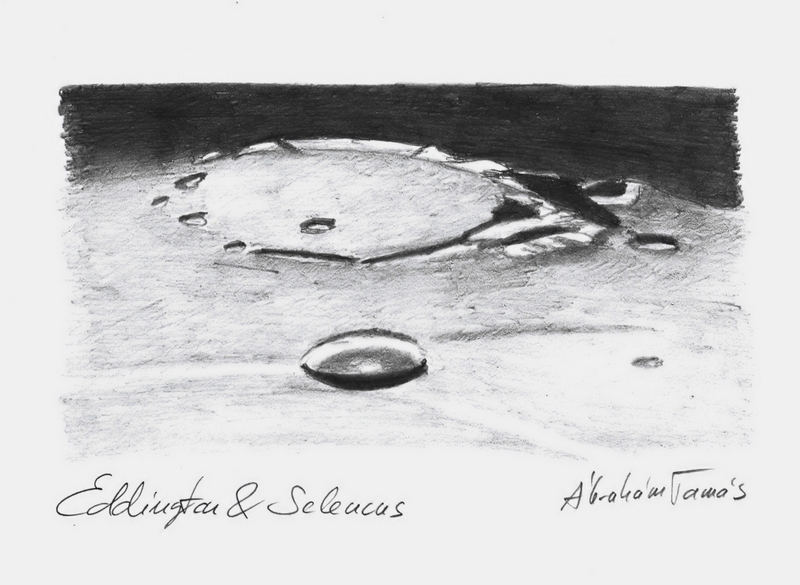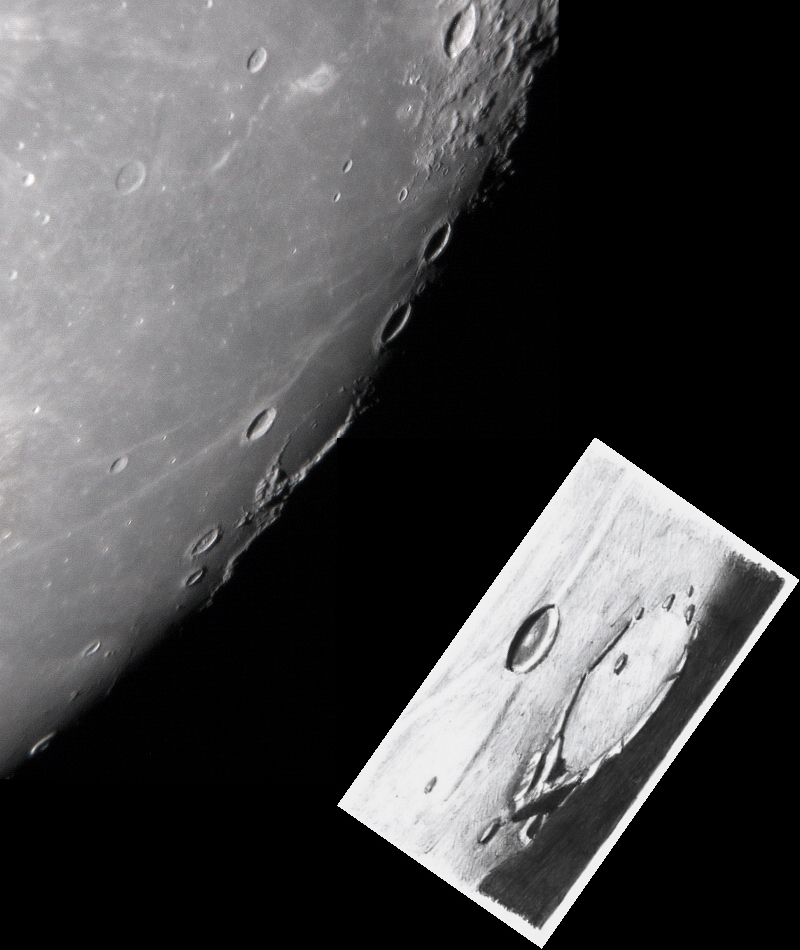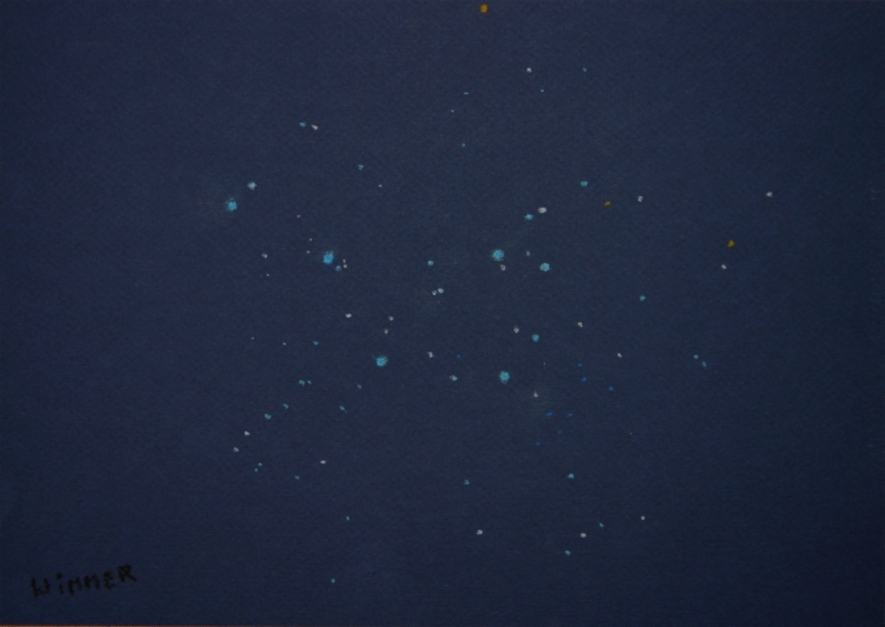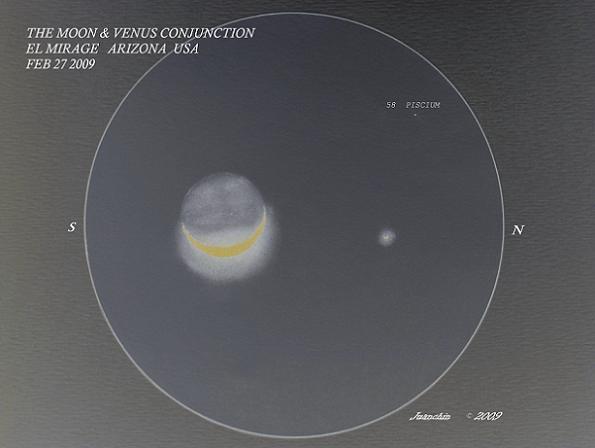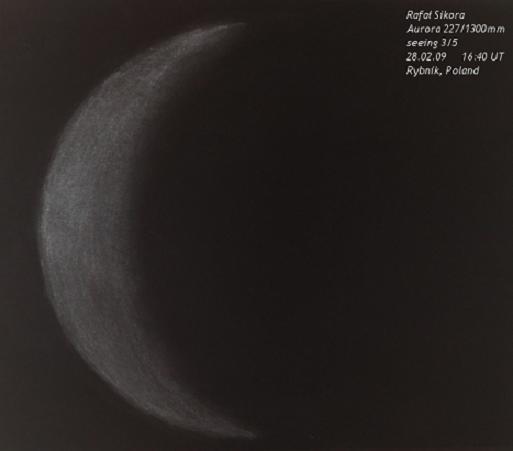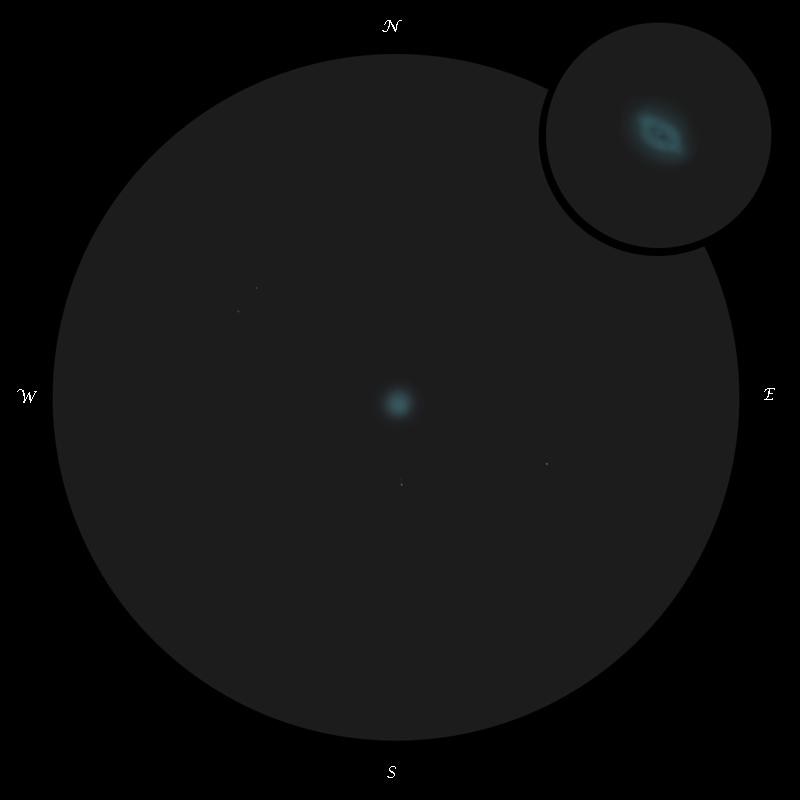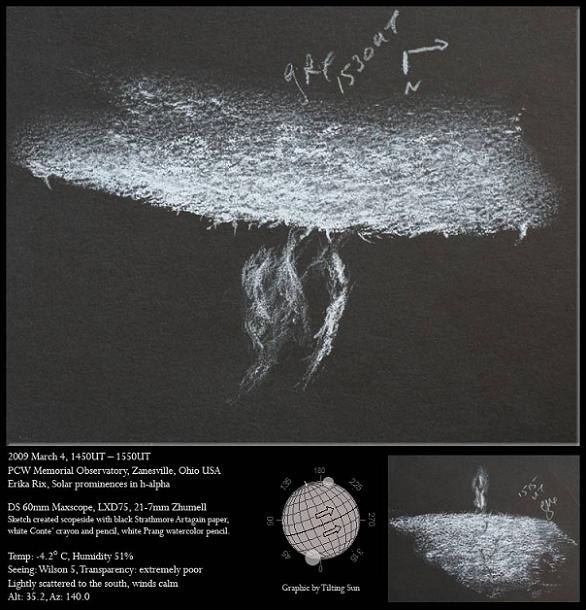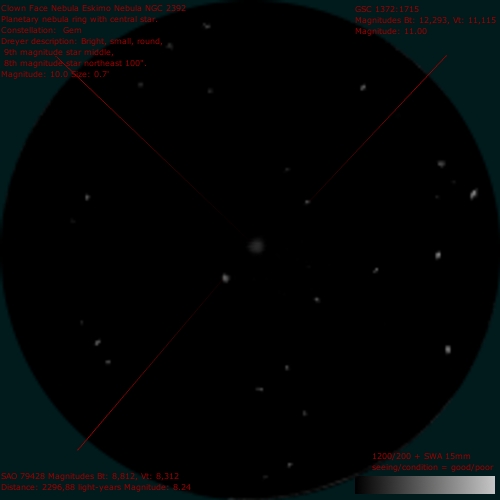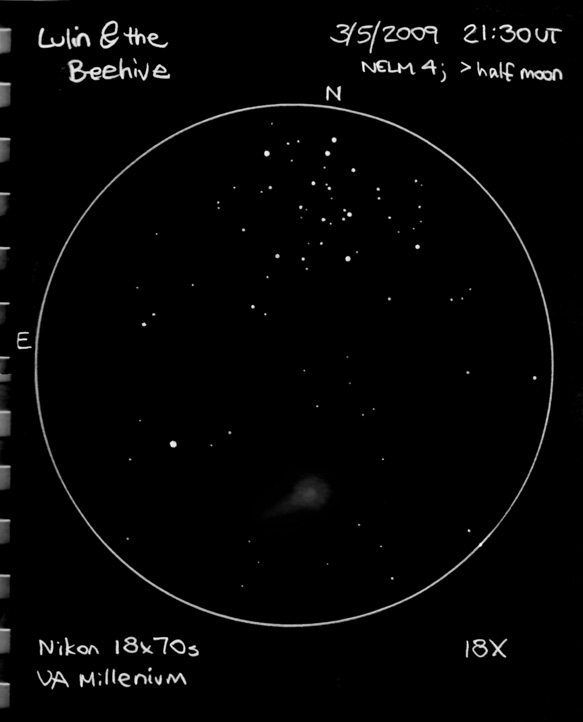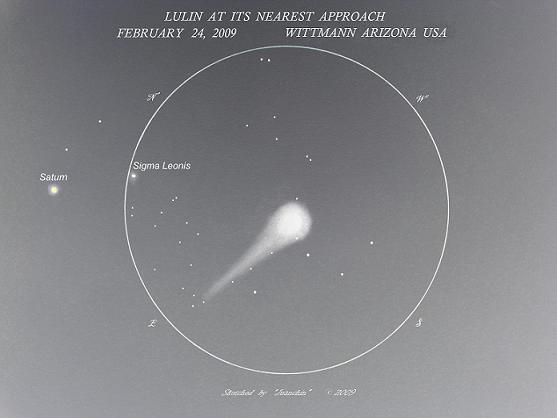
Lulin at it’s Closest Approach
Sketch and Details by Juan Perez (Juanchin)
Object – C/2007 N3 Lulin
Date – February 24, 2009
Time – 12:25 am LST 07:25UT
Location – Wittmann, Arizona USA
Instrument- Orion 25×100 binoculars 2.5 FoV
Detector – Visual Observation
Magnitude- ~5.5
Weather – partially cloudy;moderate winds;temp-mid to low 50’s
Comments- This had to be one of my most exciting nights out in the dark. I knew the comet was going to be looking its best during this time period so, I packed my pad, pencils,tripod,binos,etc. and decided to scout a darker site than my ususal backyard here in El Mirage. Driving west from here on US 60, leads to Wittmann. A small town with dusty roads that sits behind the White Tanks mountain range. The mountains provide some cover from the city glow( Phoenix) and the town is not sprinkled with too much artificial light.
Immediately, I went to work but had to wait for an annoying Cirrus blanket that covered the view. It finally cleared but before I even looked through the binos, I wanted to spot it with my eyes alone. It didn’t take long, it was situated South-southwest from Sigma Leonis (mag. 4). Looking through the pair of optics, the comet was glowing in many ways. For a few intervals of my best viewing, I was able to discern that light greenish tint from the coma. The nucleus was well pronounced in brilliancy and also the antitail was there for effect. I was not able to see the gas tail since some of the wispy clouds took away some of the details from view.
I didn’t get to polish and finalize this sketch until now since my brother flew in from Chicago, IL. He came here to see the comet for himself and now has some stories to tell his friends. I’m sure he’ll tell them they can see it for themselves the next time it swings around us but, they’ll have to wait a thousand years for it to return if it ever comes back. I’m sure he’ll tell them to log unto ASOD and take a look at what they missed.
